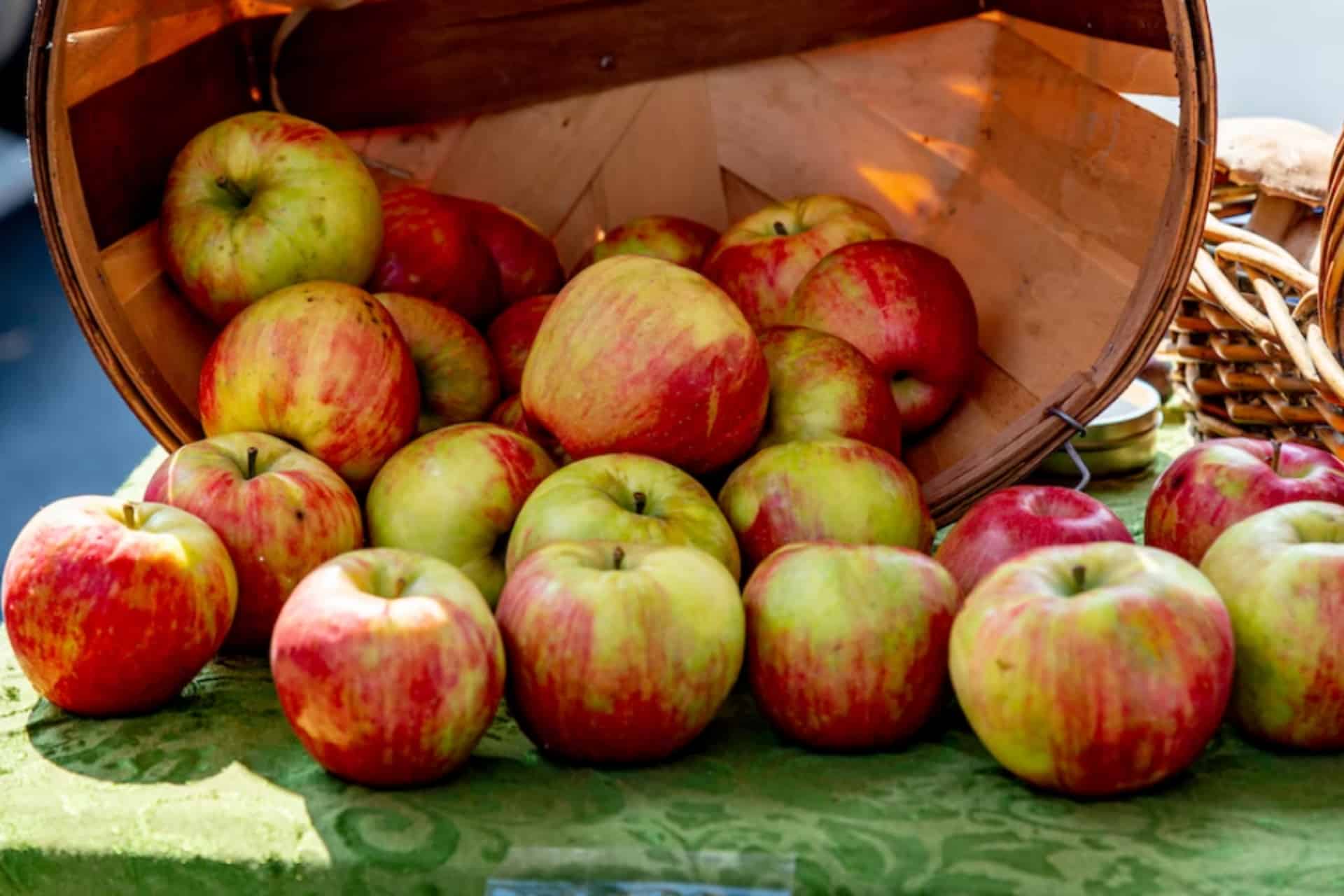A bushel is a measurement unit that’s used to measure quantity, more precisely, the volume of market products, usually food and grains.
The word comes from boissel (Old French) for “little box.” This is interesting because there’s nothing little about a bushel, and anyone who’s seen a bushel basket knows how much space this unit takes.
Let’s see exactly how much a bushel is, so next time you head to the commodities market, you go well prepared.
How Much Is a Bushel?
A bushel has the capacity of 64 pints, 32 quarts, 8 gallons, or 4 pecks.
But there’s a catch!
There are two types of bushels — In the UK, the so-called British bushel is based on imperial measures, and it’s exactly 36.4 liters of water, other liquid, or produce.
In the US, however, a bushel is used to measure only dry items, usually bulky fruits or grain. The American bushel measures 35.2 liters (2150.42 cubic inches) — it’s slightly smaller than the imperial British bushel.
How Much Does a Bushel Weigh?
Trust us, you wouldn’t want to carry around a load of a bushel of any product for a long time. The weight of a bushel depends on the product that fills up the volume.
As a unit, a bushel is typically used to quantify foods and other dry agricultural goods. Since peaches, apples, and others can vary in size, thankfully, the weight of a bushel of these and similar products is standardized.
Here are some answers to the question of how much a bushel weighs.
- A bushel of peaches weighs around 50 lbs (48–52 lbs) and contains roughly 150 medium-sized peaches.
- A bushel of apples generally contains about 125 medium-sized apples. That’s around 40lbs of apples in weight. So, a bushel of apples is enough to make two and a half gallons of apple juice with a quality juicer. Per peck, apples weigh 10 to 14 lbs.
- A bushel of tomatoes weighs the same as a bushel of corn — around 56 pounds.
- A bushel of wheat is standardized at 60 lbs.
- A bushel of cucumbers weighs around 55 lbs.
- A bushel of peas is lighter and weighs between 20 and 26 pounds.
Given all the similarities in weight, one bushel is around 60 lbs heavy or 27.2 kg. Calculating the weight of a bushel of fruits for some items is precise enough, but for others it’s a bit more complicated.
For example, a bushel of green beans normally weighs between 30 and 60 pounds per bushel, depending on the bean’s type and size.
Buying per Bushel vs. Buying per Pound
Buying in bulk saves you money, and it can be made easier when you’re using bushels as a measure. But, since a bushel is a considerable amount, the real question is — can you handle it? Know that you’ll need time and energy to process or eat a bushel of consumable goods.
Those with big families don’t need to worry. Alternatively, you can use your freezer to keep whatever food you bought from going to waste.
That said, be careful when buying bushels of produce. Stats show that around 50% of fruit and veggies are thrown away, so plan well if you want to be on the good side of this stat.
That said, buying per bushel can also save you money. If you love seafood, a bushel basket of crabs can give you around 84 – 96 crabs that are 5-5.5 inches long. This will cost around $400.
If you buy a bushel of oysters, you’ll get 100 to 150 oysters for approximately 45 and 60 pounds. Although bushel prices vary around the nation, a bushel should typically cost you around $50.
Conclusion
Bushels are often used to measure the yield of crops, and prices for crops are often quoted in terms of price per bushel. Now that you know all about bushels, put this information to use in your daily life! Use it when talking with farmers or when buying groceries at the store.
Thanks for reading! We hope this article has helped you understand how much a bushel is and what it’s used for.
If you have any questions, please leave them in the comments below.













